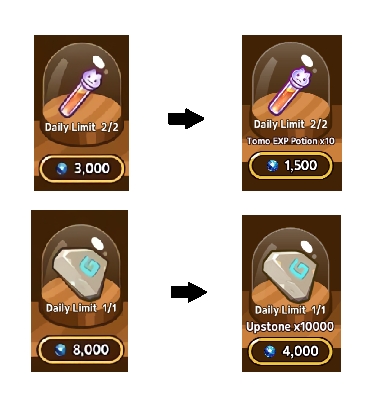Halving
NINKY halving refers to the event at which the supply of NINKY token in Idle Ninja Online is adjusted in proportion to the current distribution of the token.
Through the reduction of obtainable tokens and the discount of goods price in game, the system seeks to strengthen the relationship between the game and the NINKY economy.
Mechanism
In proportion to the total supply of NINKY, the in-game reward for NINKY token and the price of goods in NINKY Shop are cut in half.
If halving is applied to the in-game reward only, decreased earnings of NINKY combined with weaker buying power of users would result in unwanted deflation. This would not only ruin the in-game experience of users but also destabilize the tokenomics of NINKY.
However, since the price of goods in the NINKY Shop is also cut in half, the buying power of users in the game remains unchanged.

As a result, only the value of token owned by existing users is enhanced, and new users are completely not affected by halving. The halving cycle of NINKY comes to operate in a way it takes both new and old users in consideration.
In the near future, as the NINKY community evolves into a decentralized autonomous organization(DAO), the halving process is expected to include several more steps such as voting, announcement, etc.
Effect
The system of halving contributes to the NINKY economy in the following manners:
Controls the rate in which the NINKY token is supplied, adjusting the speed of currency expansion to fit the ultimate total supply of 10 billion.
Acts as a compensation for the existing players by raising the value of pre-existing tokens, thus reinforcing the lock-in effect for users to stay in the game.
Provides credibility to the price of NINKY by guaranteeing the stable — or even rising — price in the future, resulting in an increased inflow of NINKY to the economy.
From the first halving that took place on January 3rd 2022, a series of halvings is planned to be executed onwards as the supply of NINKY in the system changes over time.
Last updated